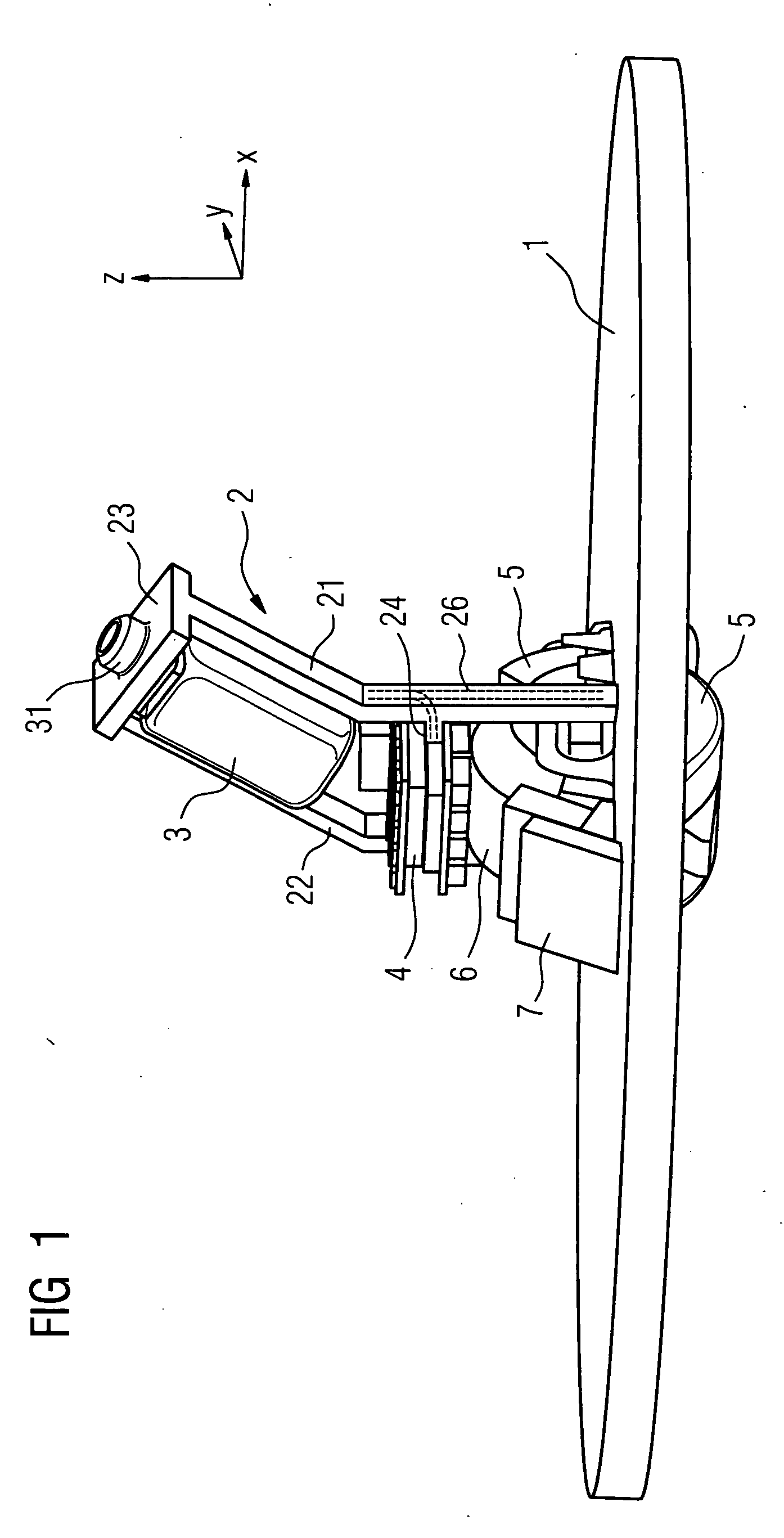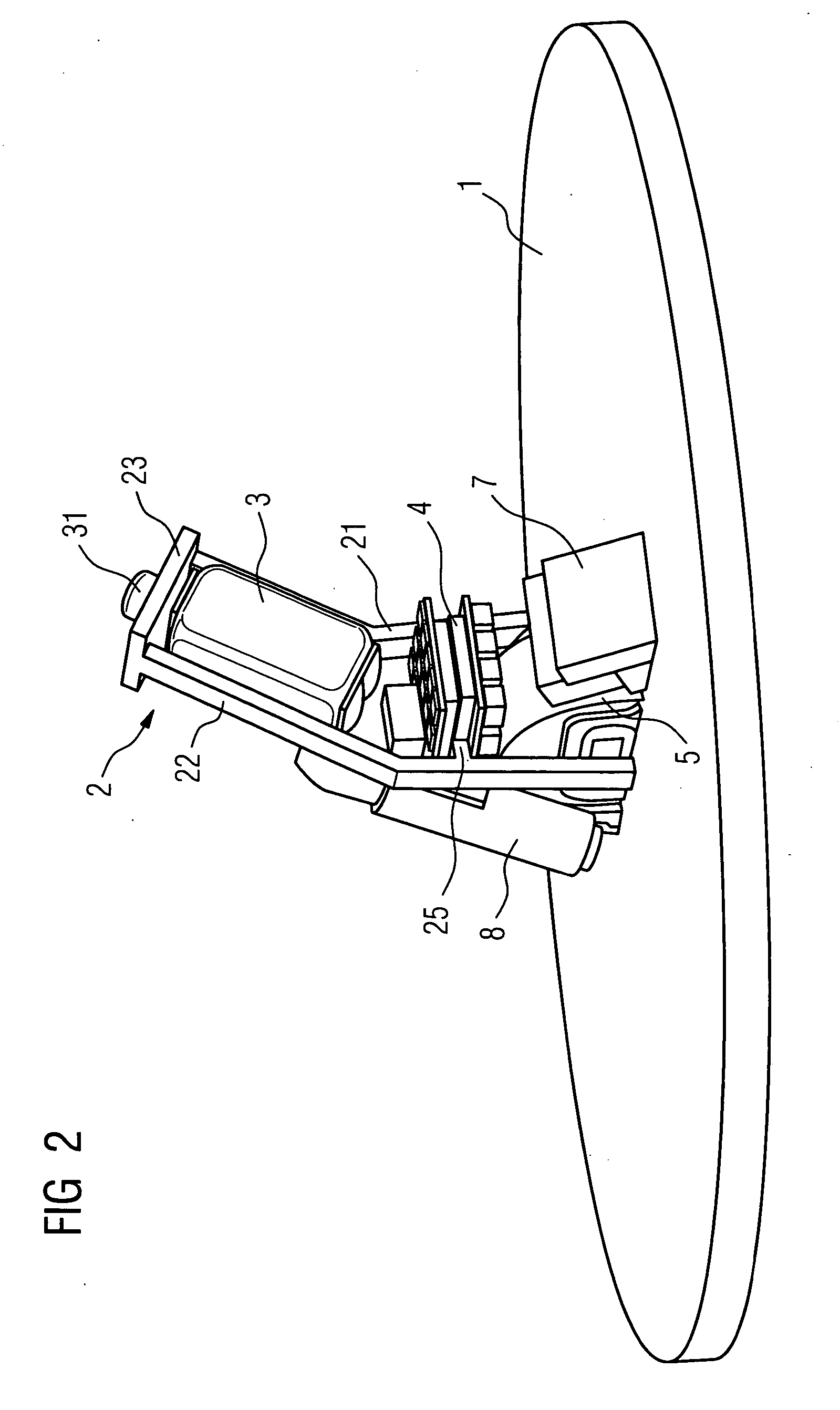In-the-ear hearing aid having an electronics module
a hearing aid and electronics module technology, applied in the field can solve the problems of inability to make optimal use of the overall space available, inconvenient assembly of custom in-the-ear hearing aids, and complex manufacturing so as to reduce the size of the design of in-the-ear hearing aids and increase the range of functions.
- Summary
- Abstract
- Description
- Claims
- Application Information
AI Technical Summary
Benefits of technology
Problems solved by technology
Method used
Image
Examples
Embodiment Construction
[0016] The exemplary embodiment described in more detail below is a preferred embodiment of the present invention.
[0017] According to the example in FIG. 1, there is secured to the face plate 1 a supporting structure 2 having the function of an inner housing. The supporting structure here consists substantially of two rods 21 and 22 and of a plate 23 which joins the rods 21 and 22 at their free end.
[0018] Located in the space between the rods 21 and 22 are the electronic components of the in-the-ear hearing aid. Thus, the stub 31 of the receiver 3 projects through a hole in the plate 23, and the body of the receiver 3 rests against the rods 21 and 22. Below the receiver, that is to say at the end of the receiver 3 opposite to the stub 31, there is located a signal processing circuit 4. In this case the circuit consists of two individual printed circuit boards which are secured to ribs 24 and 25 of the rods 21 and 22. This is also easy to see in FIG. 2.
[0019] Below the signal proc...
PUM
 Login to View More
Login to View More Abstract
Description
Claims
Application Information
 Login to View More
Login to View More - R&D
- Intellectual Property
- Life Sciences
- Materials
- Tech Scout
- Unparalleled Data Quality
- Higher Quality Content
- 60% Fewer Hallucinations
Browse by: Latest US Patents, China's latest patents, Technical Efficacy Thesaurus, Application Domain, Technology Topic, Popular Technical Reports.
© 2025 PatSnap. All rights reserved.Legal|Privacy policy|Modern Slavery Act Transparency Statement|Sitemap|About US| Contact US: help@patsnap.com



